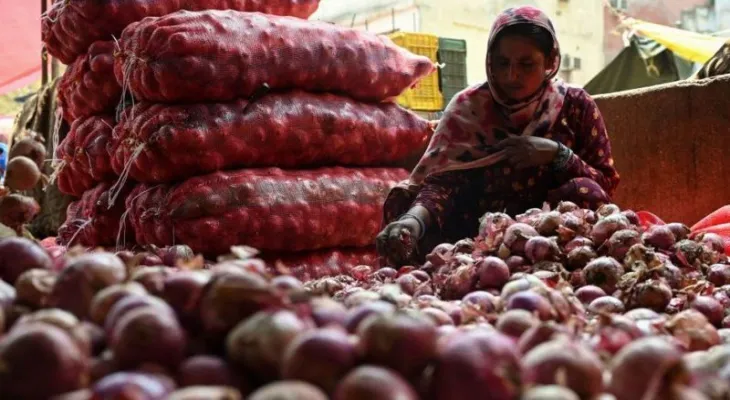Search here
Newspaper
Search here

Arab Canada News
News

Published: September 1, 2023
The rise in temperatures, the phenomenon of global warming, floods, droughts, and fluctuating climatic conditions, particularly in August which was the driest in over a century, caused food prices in India, a major player in global agricultural trade, to rise by more than 11 percent.
As tomato prices began to decline, onion prices surged by a quarter since June in the local market. The cost of pulses used to make the humble lentil soup increased by 20 percent.
Some economists say India is suffering from a "curry problem," as the cost of a regular vegetarian meal jumped by a third in July alone.
With elections approaching in key states this year and general elections next summer, the Indian government rushed to take action, launching a number of measures to curb food price inflation.
After imposing a ban on wheat exports in May 2022, India announced a sudden halt to non-basmati white rice exports last month.
The International Food Policy Research Institute (IFPRI) believes this to be the case, especially concerning rice, sugar, and onions. Over the past decade, India has emerged as the world's largest rice exporter, holding a 40 percent market share, and is the second-largest exporter of sugar and onions.
The FAO Rice Price Index jumped by 2.8 percent in July—the highest level since September 2011, driven largely by increases in the price of the Indica variety of rice that India has banned exports of. The FAO stated that this has exacerbated "upward pressure" on rice prices from other regions.
Joseph Glauber, a senior researcher at the International Food Policy Research Institute, told the BBC: "Since the announcement of the ban late last month, Thai rice prices have risen by 20 percent."
The impact of this, especially on the world's poor, could be devastating as food insecurity intensifies in 18 "hunger hotspots" identified by the FAO and the United Nations World Food Programme.
Rice is a staple part of the diet or represents a large share of caloric consumption for millions across Asia and Africa. India is the main supplier to these markets.
Forty-two countries in Asia and Sub-Saharan Africa obtain 50 percent of their total imports from India, with this figure rising to 80 percent in some nations, according to the International Food Policy Research Institute, and India’s share cannot be easily replaced by imports from other large exporting countries like Vietnam, Thailand, or Pakistan.
Opal Galhati, chief economist at the FAO's Markets and Trade Division, says that the rise in global food prices can also have other repercussions in these countries, such as keeping food import bills high, leading to the use of precious foreign currencies, thus exacerbating balance of payments issues and contributing to inflation.
However, we shouldn't place the blame for the increase in global food prices solely on India’s actions.
Other major factors contributing to this include the end of the Black Sea Grain Initiative following the Russian invasion of Ukraine and harsh climatic conditions across the globe.
Galhati told the BBC that the combination of these market dynamics "has reversed the downward trend in global food prices that was observed since mid-last year."
Global food prices have reached historic highs, despite slowdowns in many parts of the world, such as China. This affects global food prices due to weak demand from these areas.
The World Bank expects the average food price index in 2023 to decline compared to 2022, driven by falling prices of oil and grains.
But experts say the future price trajectory will depend on the impact of the climatic phenomenon El Niño (a naturally occurring climate phenomenon associated with rising sea surface temperatures in the central and eastern tropical Pacific areas, occurring on average every two to seven years, and typically lasting from 9 to 12 months), which could have long-term effects and impose further pressures on food markets.
Comments